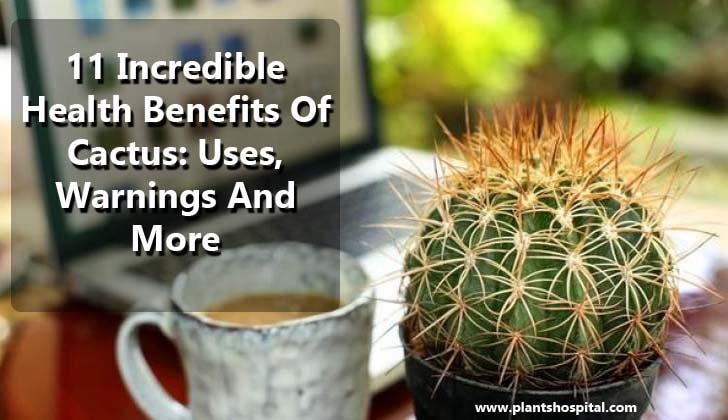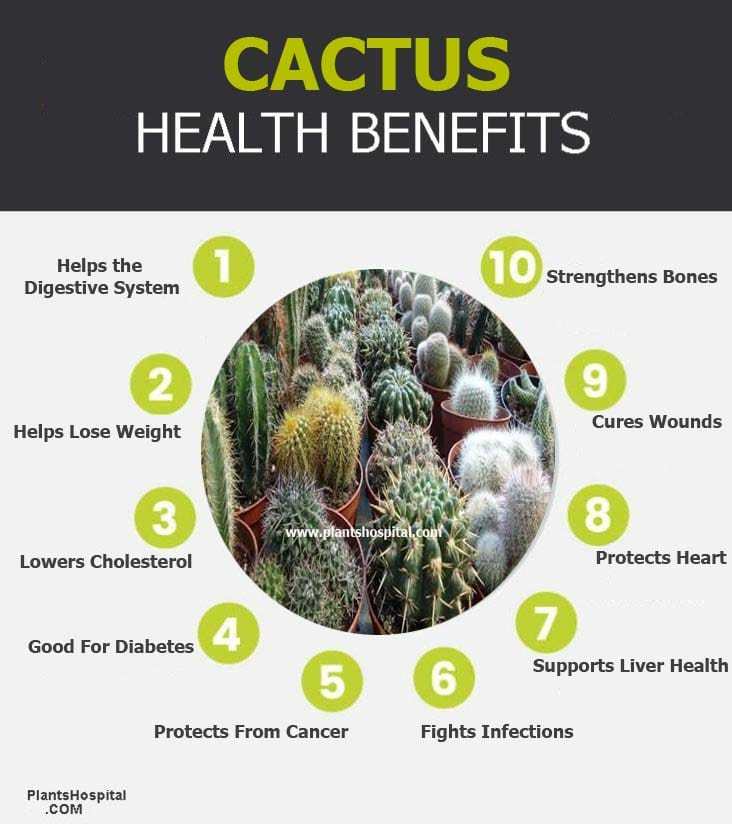Table of Contents
What is Cactus?
There are many edible cactus species behind their thorns. Some of the edible cactus species are known as Indian fig, pear cactus, prickly pear or nohpalli, and nopal.
There are over 100 species of cactus growing specifically known as nopal. This edible species of cactus, which grows wild in the desert regions of Mexico, is used in kitchens and the making of medicines.
Nopal cactus can be eaten when removed leaves peeled and from their needles. This cactus, which is mostly in green color, is sometimes introduced to the market, such as purple.
This amazing plant, which is produced throughout Mexico and the southwestern United States and has own market, is readily available in stores. It can be eaten fresh as canned food.

11 Amazing Health Benefits Of Cactus
Helps the Digestive System
Cactus are high in fiber, so it enables smooth muscles to act for the digestive system to function properly.
It also stimulates the peristaltic movement, thereby reducing symptoms of both diarrhea and constipation. Fiber, on the other hand, reduces cholesterol levels in the body and protects heart health.
Helps Lose Weight
It helps lose weight due to components. Fiber can stop the release of the hunger hormone, ghrelin. Therefore, it can keep away from overeating. On the other hand, this plant is extremely low in saturated fat and cholesterol.
However, nutritional values are quite high. While B6 vitamins and riboflavin support the good functioning of metabolic functions, cactus supports weight loss by burning fat and supplementing energy.
Lowers Cholesterol
According to research, cactus leaves can help lower high cholesterol levels in the body. In clinical studies on women, in particular, it has been shown to reduce cholesterol and triglycerides levels in the body. This highly functional food can thus help to eliminate the risk of heart problems.
Good For Diabetes
High blood sugar levels in the body lead to many diseases, including diabetes, stroke and heart disease.
Eating cactus leaves helps to reduce blood sugar levels in patients with obesity and diabetes. Specifically, a study on non-obese diabetics showed that cactus consumption caused an 11 percent reduction in blood sugar levels.

Protects From Cancer
It contains several antioxidants that can help protect healthy cells from damage from free radicals.
According to a 2009 study, it can be effective on cells that cause breast, prostate, colon and liver cancers. These leaves contain phytochemicals. This prevents the growth of cancer cells without damaging healthy cells.
Fights Infections
It can fight inflammation in the muscles, veins, gastrointestinal tract and cardiovascular system. It can also relieve pain in urine, bladder infections, and gallstone formation.
Free radicals contain substances that can neutralize them without causing harm. Cactus, which has analgesic and anti-inflammatory properties, is also able to fight ulcers and edema.
Read: 12 Amazing Health Benefits Of Cauliflower: Uses & Warnings And More
Supports Liver Health
These leaves are extremely high in antioxidants and flavonoids. With this content, it can neutralize the effect of free radicals before entering the liver. Antioxidants absorb toxins and scavenge them from the body. This helps the liver function properly.
Protects Heart
Thanks to their ability to prevent atherosclerosis, lower cholesterol and continue to maintain cardiovascular function, cactus leaves can reduce the risk of heart disease. Some of the minerals found in cactus leaves can help keep the heartbeat and heart rhythm at normal levels.
Cures Wounds
Cactus leaves have gained worldwide fame in medical terms for the treatment of cuts, burns, wounds, and fractures.
The leaves of the Cactus work to eliminate pain and ensure its recovery. Cactus, known today as an anti-inflammatory, may be useful in treating wounds.
Strengthens Bones
Calcium is an important nutritional mineral commonly found in milk, yogurt, cheese, and dark green vegetables.
Calcium is one of the most important components of bone and teeth. Calcium in the cactus is essential for stopping bleeding, blood clotting and normal functioning of nerves, muscles, and heart.
Supports Thyroid Health
It is surprisingly rich in natural vitamins and minerals. At the same time, containing manganese is quite beneficial for thyroid health.
It contains far more manganese than the daily recommended manganese requirement. Therefore, it is worth paying attention to the amount of time you consume. Thus, it supports healthy thyroid metabolism.
Read: 22 Proven Health Benefits Of Henna & Benefits To Skin, Hair And Nails
What Are The Health Benefits of Cactus Fruit?
People often think that cactus is dangerous because of its prickly surface. However, many cactus species can be eaten. For example, a type of cactus known as prickly pear, prickly fig, or prickly pear is said to be very useful. Cactus, which bears fruit for a maximum of three years, has considerable capacities.
It contains 1/3 of the daily vitamin C requirement. Vitamin C, known as ascorbic acid, stimulates the production of white blood cells and strengthens the immune system by acting as an antioxidant in the body.
Calcium is abundant in cactus fruit, which is an integral part of the body’s nutrition system. Calcium is very important for the creation of bone tissue in the body. If there is enough calcium in the system, it can prevent age-related bone disorders such as osteoporosis as well as various dental problems.
Cactus fruits are rich in fiber. This is why it helps the digestive system to function properly. It supports the digestive system by eliminating constipation, bloating and more serious gastrointestinal problems such as colon cancer or stomach ulcers.
First of all, cactus fruit relaxes blood vessels with fiber and potassium support. This reduces stress, lowers blood pressure and prevents bad cholesterol. All of these protect heart health and reduce the risk of diseases.
It contains antioxidant compounds that prevent healthy cells from returning to cancerous cells. Cactus fruit, which also contains flavonoids, polyphenols, and betalains, is highly effective in preventing cancer.
In addition to preventing cancer, antioxidants prevent macular degeneration, improve vision, reduce the risk of premature aging, protect skin health. Along with these, it increases the power and functionality of the brain. It thus eliminates the conditions that lead to dementia and Alzheimer’s disease.
Side Effects
It is considered safe when eaten as food. Prickly pear cactus, whose leaves, stems, flowers, and fruit are consumed by mouth as appropriate quantities of medicine for a short period, is probably safe.
It can cause some side effects such as mild diarrhea, nausea, increased stool, bloating, headache and frequency.
Pregnancy and Breastfeeding: If you are pregnant or breastfeeding, there is insufficient reliable information on the safety of prickly pear cactus consumption. To stay on the safe side, it is beneficial to avoid its use.
Diabetes: It can lower blood sugar levels in people with diabetes. If you have low blood sugar (hypoglycemia) or diabetes, blood sugar levels should be monitored when using prickly pear cactus.
Surgery: It can affect blood sugar levels. Therefore, you should check your blood sugar during and after surgery. Consumption should be stopped at least 2 weeks before the date of the surgery.
Advice
As you can guess, the first thing you need to do is get rid of the thorns. It is possible to buy cactus leaves from local markets or online. You can slice the cactus leaves and add them to the salad.








